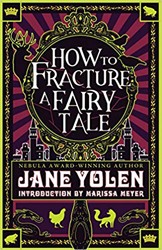How many ways can one say, “I love you?” An anthology must, by its very nature, be selective, but it does seem that Sasso and Schram have included almost everything in Jewish Stories of Love and Marriage.
The volume presents both familiar love stories and the unusual — ranging from the better-known biblical Song of Songs to love letters from a husband showing appreciation for his wife’s ordeal during childbirth. The stories inform those who have little knowledge of Judaism, and deepen the understanding of those who are already familiar with its tenets. Well-researched in archives and libraries, and well-documented, the material here is full of different voices. To mention only a few:
“The Wedding Blessing,” a brief story from the Talmud, is a particularly apt inclusion. In her creative retelling, Peninnah Schram guides the reader to extend the Talmudic version and bless others — at a wedding, birthday, or other milestone.
In midrash (stories written by rabbis after the Bible) the course of Jewish history is forever altered. The Book of Exodus tells us that Miriam, sister of Moses, led the women to freedom “with timbrels and with dances.” The Bible doesn’t mention her further. It is only in post-biblical imagination that we learn of Miriam’s marriage to Caleb, who fell in love with her despite a hideous skin disease. Eventually she was the ancestress of King David and the messianic promise. A love story indeed.
In Jewish tradition, micrography (outlining a picture with letters rather than solid lines) is used to present passages of Torah. Here, in a five-page visual feast, skillfully executed by Schram’s daughter-in-law, Sonia, small metal points were employed to tell the story in which love of Torah and love of festivals lead to love between man and wife. Use your magnifying glass to see what is hidden from the naked eye!
In Jewish folk literature, the greatest concern of young women is the subject of marriage. “Who will be my husband? What will married life be like?” are questions they often ask. The stories here, most of which are told by women, were created to answer these questions. Due to the international origins of the pieces, the reader feels a sense of connection with women from around the world.
One of the largest political and judicial scandals of the late 19th and early 20th centuries was the false treason accusation of Alfred Dreyfus, a French Jewish soldier. After his conviction, he was banished to Devil’s Island. His heart-wrenching love letters to his family, presented here, put a human face on history.
But what makes this book truly a treasure is the sharing by the authors of the most intimate feelings in their own lives: Peninnah Schram’s father begins a letter to his wife, “My beautiful little bird Devorele” and Sandy Sasso addresses her dedication, “To Dennis, with whom my own love story began. With eternal love have I loved you.” It is clear that both authors are loving and loved. The reader feels loved as well. In fact, he or she might think, “These authors are so concerned about me that they included instructions for writing my own love story.” What a rich volume for anyone and everyone.
Related Content:




